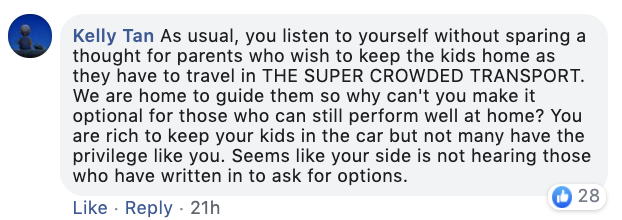Singapore – Education Minister Ong Ye Kung disclosed that they would be applying a “ring-fence” approach by putting Covid-19 confirmed cases on leave of absence and will do so on a “small scale” instead of fully closing down schools.
Mr Ong revealed the Ministry of Health’s plans to the press on Thursday (July 16) in response to a 13-year-old Jurong West Secondary School female student who was wrongly diagnosed with Covid-19 due to mislabelled samples at a hospital laboratory. It was initially concluded that said student had acquired the virus from another student who had earlier tested positive for Covid-19.
When asked about MOE’s contingency plans in addressing student-to-student transmission should they occur, Mr Ong said, “So the approach is always, you need to ring-fence and quarantine and put students and teachers on that leave of absence, but do it in small (a) scale as possible.” He added that if this could be done for a class to keep the school safe, “do so, if not (do it) at (the) level. And if not, maybe a school, as opposed to always reacting to a full closer or full opening. I don’t think that is appropriate,” reported channelnewsasia.com.
Mr Ong mentioned how “comforted” he was that most parents and teachers understood the actions imposed by MOE. “Like Jurong West Secondary School, I was most comforted that when we closed that whole level, (Secondary) 1, the other levels, like 90 over per cent came back to school,” he said. “That means they understood by ring-fencing that level, the rest of the school is actually safe. Because of the measures, they don’t intermingle. So I think so long as we can keep those procedures in place, parents, teachers understand, students understand. Then I think we can make life as normal as we can.”
Mr Ong noted that while many school activities have not resumed, MOE is in the process of continuing to understand the virus and its transmission and will continuously review its approach. “We know that the current state seems to work, and we will have to constantly review, work very hard, always be alert, then gradually bring back more activities,” he said. “That’s how we have to act, moving slowly towards an equilibrium and a new normal. We’re still in progress.”
Members from the online community had varying reactions to this announcement, with some agreeing with MOE’s decision. In contrast, others perceive it better to practice a precautionary approach and not a reactive one.
Those who agreed noted this was a better option compared to the opening or closing of schools for just a small number of people which would cause more stress and disruption. “Kids still learn better in a class setting in school. You can’t keep e-learning forever,” added Facebook user Johan Loke. Others also considered the safety of children with parents who have to work.








Meanwhile, some thought about the safety of the children concerning the ongoing pandemic. “The problem is the coronavirus doesn’t spread in a similar manner, or ways like an oil spill do (sic),” commented Facebook user ChengHui Cai who noted that one couldn’t ring-fence something unseen or airborne. Those who disagreed mentioned it was a “sit and wait approach” with action taken only when the situation becomes a full-blown school outbreak.







